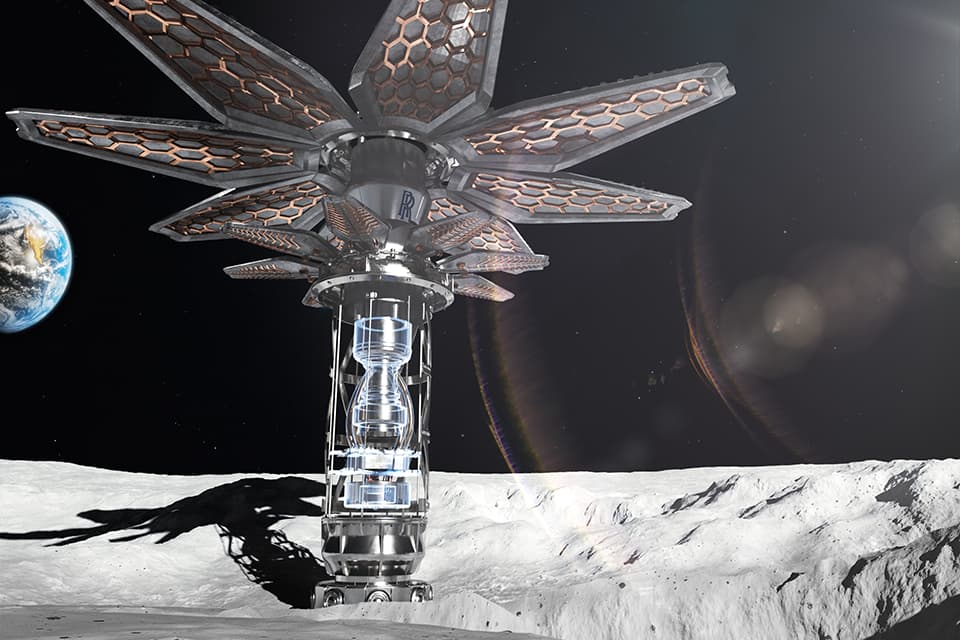The UK Space Agency has awarded Rolls-Royce a £2.9-million (US$3.5-million) contract to develop a demonstrator modular nuclear reactor that could be installed on the Moon by 2029 to support permanent human outposts on the lunar surface.
Most spacecraft that operate in the vicinity of Earth are powered by solar panels, but probes that land on the Moon and intend to operate for more than a couple of weeks at most need an alternative power supply. This is because the Moon has nights that last 14 Earth days when the temperature can plummet to -298 °F (-183 °C), which can fatally damage batteries and delicate electronics.
This alternative power supply is usually one based on radio-thermal generators, where the natural decay of radioactive elements like plutonium can provide power to the spacecraft, or can at least keep the equipment warm enough to survive until lunar sunrise.
However, the sort of large installations that future astronauts will need to live and work on the Moon will require large amounts of power at all times on the Moon, regardless of whether there is sunlight or not. That means going beyond radio-thermal generators to proper nuclear fission reactors similar to those used on Earth for domestic and military applications, though scaled down and adapted for lunar conditions.

Rolls-Royce
Rolls-Royce has already been working on its Micro-Reactor program since last year under a UK Space Agency study contract worth £249,000 (US$303,000). The goal now is to build an actual reactor that could one day provide a Moon base with the power needed for communications, life-support, and science experiments, among other applications.
The new modular reactor will be developed with the help of the University of Oxford, University of Bangor, University of Brighton, University of Sheffield’s Advanced Manufacturing Research Centre (AMRC) and Nuclear AMRC. The program will not only include building the reactor, but also the technology to transfer the heat produced by the reactor and convert it into useful electricity.
Aside from powering a Moon base, Rolls-Royce also sees the technology as having potential terrestrial applications.
“The new tranche of funding from the UK Space Agency means so much for the Rolls-Royce Micro-Reactor Programme,” said Abi Clayton, Director of Future Programmes for Rolls-Royce. “We’re proud to work collaboratively with the UK Space Agency and the many UK academic institutions to showcase the best of UK innovation and knowledge in space.
“This funding will bring us further down the road in making the Micro-Reactor a reality, with the technology bringing immense benefits for both space and Earth. The technology will deliver the capability to support commercial and defense use cases alongside providing a solution to decarbonize industry and provide clean, safe and reliable energy.”
Source: UK Government
Source of Article